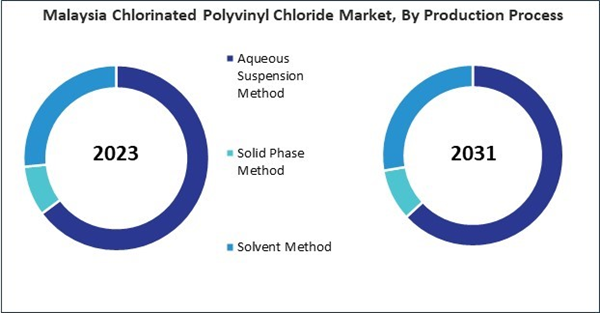Direct sales channels play a crucial role in the distribution of Chlorinated Polyvinyl Chloride (CPVC) products, facilitating direct transactions between manufacturers and end-users. The sales of CPVC through direct channels have shown steady growth in recent years, driven by various factors and reflecting market trends within the industry. Thus, the China market is expected to sale 115.96 kilo tonnes of chlorinated polyvinyl chloride by direct sales channel by 2031.
The China market dominated the Asia Pacific Chlorinated Polyvinyl Chloride Market by Country in 2023, and is forecast to continue being a dominant market till 2031; thereby, achieving a market value of $331.9 million by 2031. The Japan market is registering a CAGR of 10.5% during (2024 - 2031). Additionally, The India market would showcase a CAGR of 11.9% during (2024 - 2031).
CPVC is employed in electrical and electronics applications for conduits, cable trays, and wire management systems. CPVC conduits provide electrical insulation, mechanical protection, and flame-retardant properties for electrical wiring and cable installations in residential, commercial, and industrial buildings.
Moreover, CPVC conduits offer robust mechanical protection for electrical wiring and cables, safeguarding them against physical damage, impact, and abrasion. The durable and impact-resistant nature of CPVC ensures that electrical installations remain intact and operational even in harsh conditions, such as industrial environments or high-traffic areas.
CPVC is utilized in various electronic components, especially those requiring insulation or protection against heat and chemicals. With the increasing production of electronic devices in India, such as smartphones, computers, and consumer electronics, there is a corresponding rise in the demand for CPVC-based materials for insulation purposes. As per Invest India, the nation's electronics production will be $300 Bn by FY26. The domestic production of electronics is valued at $101 Bn in FY23 and is segmented (based on FY22 data) as Mobile Phones (43%), IT Hardware (5%), and Consumer Electronics (12%).
List of Key Companies Profiled
- Shriram PolyTech Pvt Ltd.
- Sekisui Chemical Co. Ltd.
- Astral Limited
- DCW Limited
- Lubrizol Corporation (Berkshire Hathaway, Inc.)
- Reliance Industries Limited
- BASF SE
- Hanwha Solutions Chemical Division Corporation (Hanwha Corporation)
- Kaneka Corporation
- Avient Corporation
Market Report Segmentation
By Grade (Volume, Kilo Tonnes, USD Bilion, 2020-2031)- Extrusion Grade
- Injection Grade
- Powder
- Pellet
- Direct
- Indirect
- Aqueous Suspension Method
- Solid Phase Method
- Solvent Method
- Pipes & Fittings
- Fire Sprinkler Systems
- Adhesives & Coatings
- Power Cable Casing
- Construction
- Electrical & Electronics
- Chemical
- Agriculture
- Healthcare
- Others
- China
- Japan
- India
- South Korea
- Singapore
- Malaysia
- Rest of Asia Pacific
Table of Contents
Companies Mentioned
- Shriram PolyTech Pvt Ltd.
- Sekisui Chemical Co. Ltd.
- Astral Limited
- DCW Limited
- Lubrizol Corporation (Berkshire Hathaway, Inc.)
- Reliance Industries Limited
- BASF SE
- Hanwha Solutions Chemical Division Corporation (Hanwha Corporation)
- Kaneka Corporation
- Avient Corporation
Methodology

LOADING...









